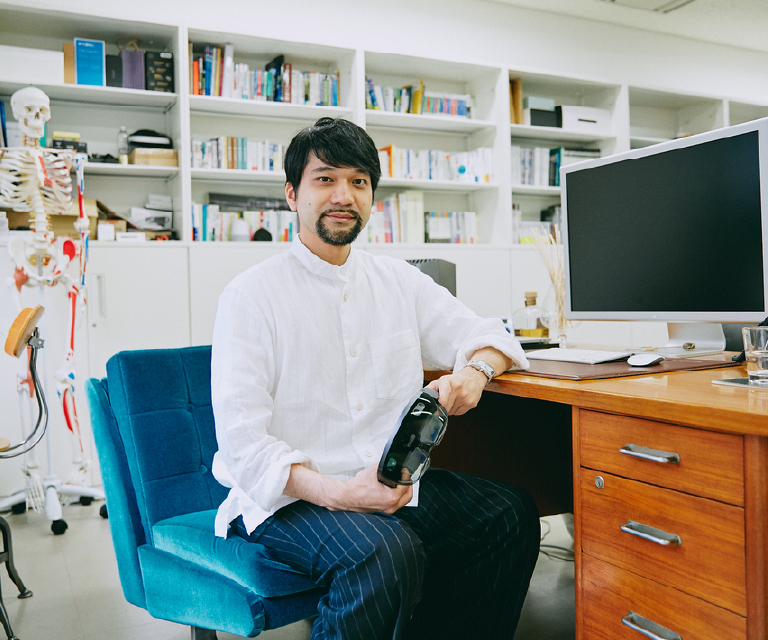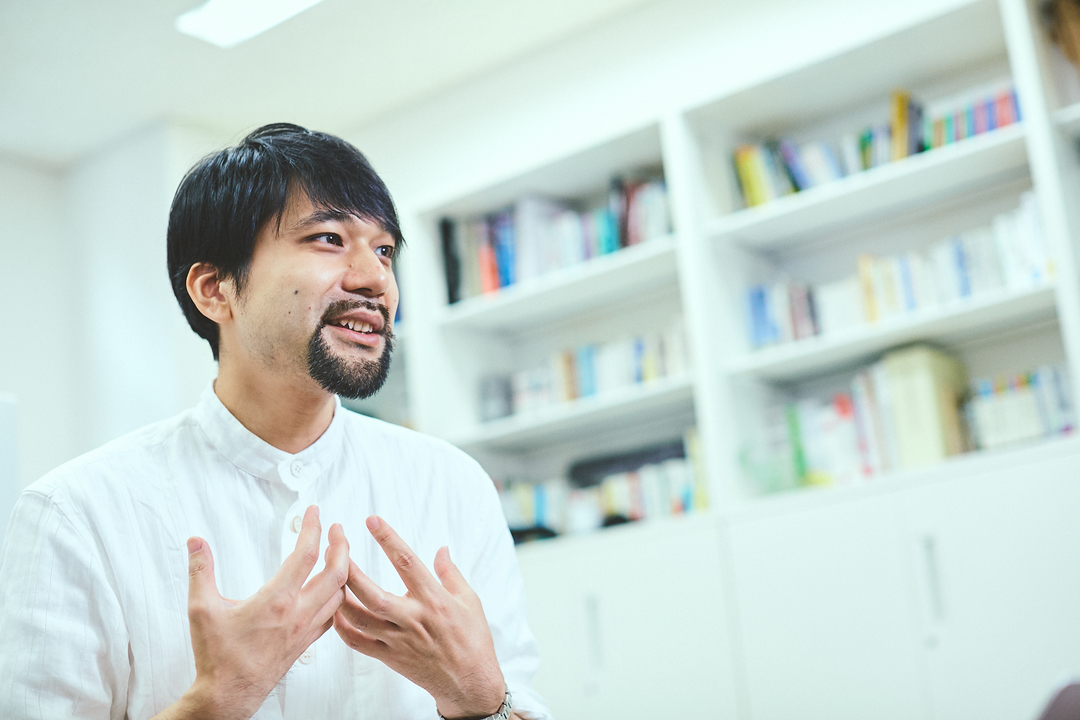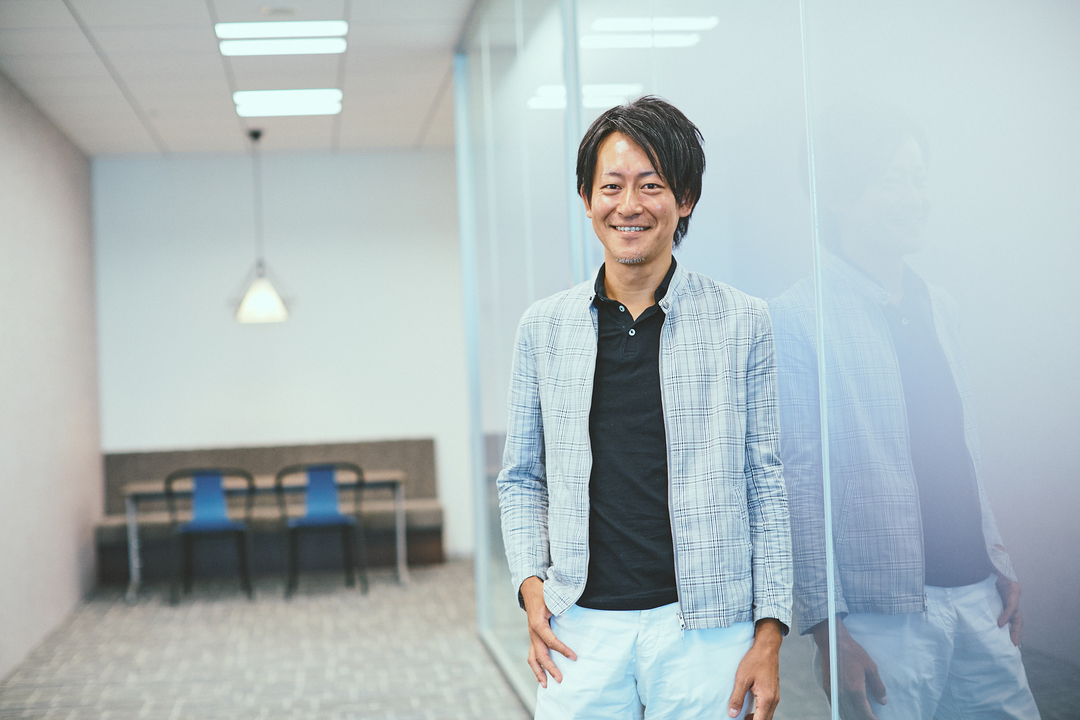
10.01.2019
The Keys to Surviving Singularity are Memory and Technology
The World in 2050 According to KIOXIA
Recently, technologies such as artificial intelligence (AI) and virtual reality (VR) have evolved rapidly. But what kind of future awaits us on the other side of this rapid technological evolution? How will it impact our daily lives? We spoke with Atsushi Hiyama of the University of Tokyo’s Research Center for Advanced Science and Technology and Yasuhito Yoshimizu of KIOXIA (the new name of Toshiba Memory effective October 1, 2019), who is pursuing the possibilities of memory with a focus on the flash memory and solid state drive (SSD) business, about the evolution of technology and the future.
Advanced Technology Holds the Key as the Super Aging Society Arrives

By 2050—30 years from now—the population of Japan is projected to be 90 million, with the number of people between the ages of 15 and 65 expected to decrease from approximately 75 million today to around 30 million, according to statistics from Japan’s Ministry of Internal Affairs and Communications. How will our daily lives change once the super aging society arrives? Hiyama says that “As we usher in the 100-year life era, the connection between society and individuals will become flexible.” He believes the values of working people will transition from a “working for society” mindset to one where “work exists to suit the needs of the individual.”
“If there is a structure in place where we are loosely connected to society from a technological perspective, I don’t see why we can’t live to the age of 100 without concerns while demonstrating our capabilities,” Hiyama explains. “Believing this, I am involved in research on the AI foundation that creates intelligent production opportunities in line with the diversity of personnel as part of the Ministry of Education, Culture, Sports, Science and Technology’s “Plan for the Creation of Future Society” project.”
The key to resolving issues in the super aging society is the utilization of cutting-edge technology such as AI. So what are we heading toward, and what technologies will enable us to get there?
“With regard to workstyle, a tool that can break work down into tasks will be developed which will enable job matching, where we will find jobs we can do without difficulty based on our skills. I believe collaborative technology between humans and robots will also proceed, and technology will be able to complement any function or sensation we may have lost. Moreover, computer graphics and motion capture technology will further evolve, and it will become possible to participate in society while in your home through the use of remote robots and avatars. An avatar will not display our appearance as it is—in addition to showing our facial expression and the background, we will be able to edit voice, age, gender, and nationality. We will enter an era in which we can be active in a distant place as a completely virtual presence.”
Facilitating the Succession of Skills Through Traditional Techniques and Technology

What’s even more surprising is that the power of technology will be exhibited in the succession of skills. As engineers age, we become unable to cultivate their successors, or we won’t be able to find successors and skills will be discontinued—and technology will resolve these issues.
“Once we become able to record experience and technology in data form,” says Hiyama, “the succession of skills will change from its traditional form.”
Recall the artisanship of an expert in traditional crafts. Normally, one would train at the foot of a master for years. Going forward, however, the movements of the master will be measured using a sensor and remain as data, copied onto experience-based media such as VR, and those skills will be recorded on the cloud. Students will then download that data and replay it in their bodies, allowing them to experience the master’s techniques vicariously.
Hiyama actually conducted verification testing using a paper craftsman as the subject. Students wore VR goggles and, while viewing from the master’s perspective in 3D, would hear the sounds made when making paper. He created an experimental framework where students could feel muscle movements as vibrations, and let students experience this. This reportedly made learning elementary actions that would normally take weeks possible in less than half an hour.
Visit a Sentimental Place Without Moving a Muscle

If the resolution of VR cameras becomes even higher and sensors can be obtained at lower cost, anyone will be able to create experience-based VR content. People will be able to download and experience a variety of skills online, and share them.
Hiyama says that he is also considering providing VR travel experiences as part of rehabilitation at care facilities. For the elderly who are unable to take a trip, based on the idea of them “revisiting” places with sentimental value, they could share the spatial expanse and experience using a 360-degree camera and VR technology.
“When actually experiencing it, patients suffering from dementia who generally did not stand up would suddenly get up and move about,” notes Hiyama. “Some people, wanting once more to stand under their own power, became enthusiastic about their rehabilitation. While I’d thought of it as a service they could enjoy without movement, memories from the past came back, and I found it very interesting that it had the effect of stirring the motivation of the elderly.”
Hiyama says that this rapid technological development will also change society. “In Japan, when we speak of changing society, the discussions usually focus on the law and government, but in the United States, in most cases new technological innovation ends up serving as the driver. The law and government change in accordance with how the technology is received by society. Technology and the law serve as the dual axes in the drive toward the future. That is the strength of the US. Even in Japan, developers of technology have become well attuned to social changes and to the kind of life people want to live, and I think that innovation will be facilitated if they approach it from the perspective of creating a new society.”
From Recording Devices to Memory Devices

According to Hiyama, the future of skill succession is only in “the playback of memory.” Technology that enables the recording and playback of memories will be necessary to convey the massive volume of memories that are etched into the human body.
In October 2019, Toshiba Memory, which has contributed significant innovation to the spread of the smartphone through the development of BiCS FLASHTM three-dimensional flash memory, changed its name to KIOXIA. Going forward, beyond recorded data, the company will aim to accumulate “memories” of the experience, emotion, and way of thinking at the moment information is born, thereby creating new value. The day when things that do not fit within the traditional framework of “information” will be able to be memorized by a chip is not far in the future.
Yoshimizu of KIOXIA had this to say:
“The volume of information stored in the world has already surpassed the ability of human beings to process.”
Data continues to accumulate and swell. To take advantage of the valuable information among that data, the evolution of artificial intelligence, which controls inference and learning, is essential.
“Beyond simply providing the element of storage, we conduct research into AI to capitalize on the recorded information, and our aim is to fashion devices and frameworks to enhance the value of information and provide them to the world,” exclaims Yoshimizu. “We have the technology to reduce the size of recording devices without negatively impacting performance. I absolutely believe there is value in this.”
In fact, according to Hiyama, they are developing a personnel search engine for job matching where AI reads “unwritten information” sought by people adept at searching with the aim of reading “tacit knowledge” that cannot be gleaned from the information written in the employment offer. Information we want to record, and information we can record, will continue to grow. That’s precisely why high information processing capability will be in demand. Expectations for KIOXIA will only continue to increase.
Will a 1 Terabyte Chip Travel Through Our Blood Vessels in 2050?

Each year, the size of logic and recording elements has gotten smaller, pushing forward the evolution of semiconductor integrated circuits in a remarkable way and heightening the degree of integration. What kind of future awaits us if evolution continues along this path?
“BiCS FLASHTM measures one centimeter square and has a storage capacity of one terabyte,” says Yoshimizu. “By 2050, the recording density is expected to grow by 10,000 times, meaning that the size of that same one terabyte element will be 0.01 millimeters square, equivalent to the size of a red blood cell that flows in vessels. In the future, it may become possible for recording media with the capacity currently found in smartphones to flow in a blood vessel. Storage capacity of 10 petabytes will be achieved for a one centimeter square chip, meaning that data stored in multiple storage racks at a present-day data center will fit on our finger. Presently, when we back up data, we upload it to the cloud, but if we can collect that data on such a small chip, the necessity for data centers themselves may very well be eliminated.”
Ray Kurzweil, the global authority on AI, declared that “singularity is near.” Kurzweil forecasts that human brains with nanorobots in them will be able to connect to the cloud. Yoshimizu had this to say:
”It’s true that, with a storage device the size of a red blood vessel, it wouldn’t feel strange if it were embedded in the human body. It is not yet known how memories would be extracted from the nerves in the brain or how to access the cloud, but my dream is to transform the BiCS FLASHTM from a recording device to a memory device.”

KIOXIA is embarking on a new beginning, separating from comprehensive electronics manufacturer Toshiba and focusing on the semiconductor business. What are the company’s goals as it sets out on this new course?
From Yoshimizu’s perspective, “More than ever, engineers are thinking proactively about new value they can provide to society. Memory transcends space and time and connects people, and can deliver new experiences. In a world where society is undergoing tumultuous change, we are considering the role we will play.”
A future beyond our imagination is on the horizon.
Note: 1 terabyte (TB) = 1,024 gigabytes (GB), and 1 petabyte (PB) = 1,024 TB
The content and profile are current as of the time of the interview (October 2019).



